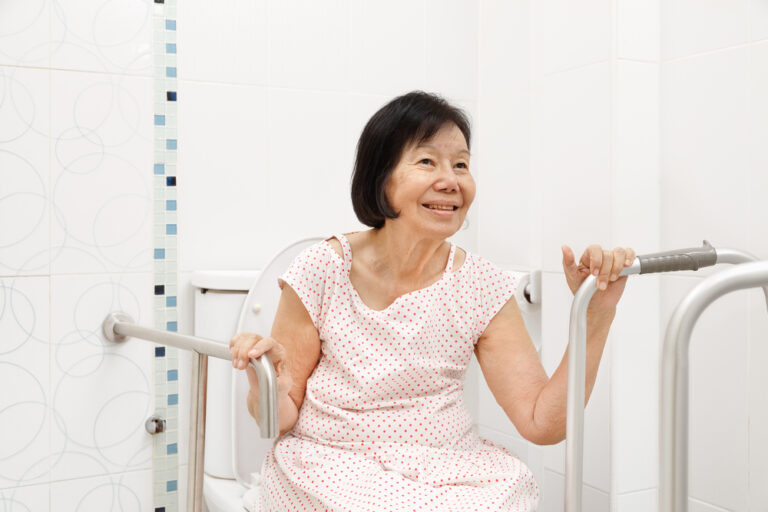How often do you use the bathroom each day? It may seem like an intrusive question to ask, but it is an essential one nonetheless. We all need to use the bathroom regularly. DailyCaring.com estimates that we use the toilet an average of seven times per day. It’s an important topic to discuss because of the need to practice safety.
The website stresses that for seniors, balance issues, weakness, frailty and cognitive issues like Alzheimer’s can make using the bathroom dangerous. What can be done to make it less dangerous? Here are three tips for seniors to maximize bathroom safety:
1. Place non-slip mats on the floor.
Needless to say, bathroom floors are slick. Their traditionally tiled surfaces create slippery conditions. This is only exacerbated by the presence of moisture which is practically unavoidable in the bathroom. Non-slip mats provide excellent traction, helping people of all ages to remain firmly upright. According to Robin Schiltz of Senior Safety Advice, a special non-slip rug that is flatter, smoother and provides more traction is more suitable in a senior’s bathroom.
“Bathmats and even bathroom rugs on the floor can present tripping and falling hazards,” she alerts, “They should be removed and replaced with the non-slip mats (find them online). Also, using bathtub and shower grip tape strips or brushing the floor with a few coats of non-slip paint will make the shower floor far less slippery.”
2. Always test the water temperature.
The simple act of turning on the faucet is sometimes enough to cause an injury. It’s important for the water temperature to not be too hot or too cold. Extreme temperatures can startle older adults, causing them to trip and fall over. Not to mention, water that is too hot or too cold can be damaging to the sensitive skin of a senior. Therefore, it’s wise for older adults to always check the water temperature before taking a bath or shower.
“Always check the temperature of the water in the bath or shower before an elderly person bathes,” insists Stephanie Struyck Elgin of Shield HealthCare, “Test water temperature before the individual enters the shower or tub to avoid sudden movements that could cause a fall.”
3. Use a shower chair.
Shower chairs all but eliminate the possibility of slipping and falling in the shower. When in a seated position, a senior is a lot less likely to topple over. “Sometimes referred to as a bath chair or a shower seat, this is a seating option designed for the elderly and those with disabilities who cannot remain standing for the duration of their shower,” Schiltz writes, “These chairs may help to minimize the risk of shower-time slips and falls.”
At LifeCare Mobility Solutions, we provide a variety of home bathroom modifications including grab bars, transfer benches, walk-in tubs and shower chairs. Other modifications can be as simple as changing water faucet handles from knobs to levers. Alternatively, they can be as comprehensive as replacing the shower or bathtub with something more accessible.
To learn more, please don’t hesitate to call us at 416-267-9800 or email us at info@lifecaremobility.ca. You may also contact us by filling out the form on our Contact page!










